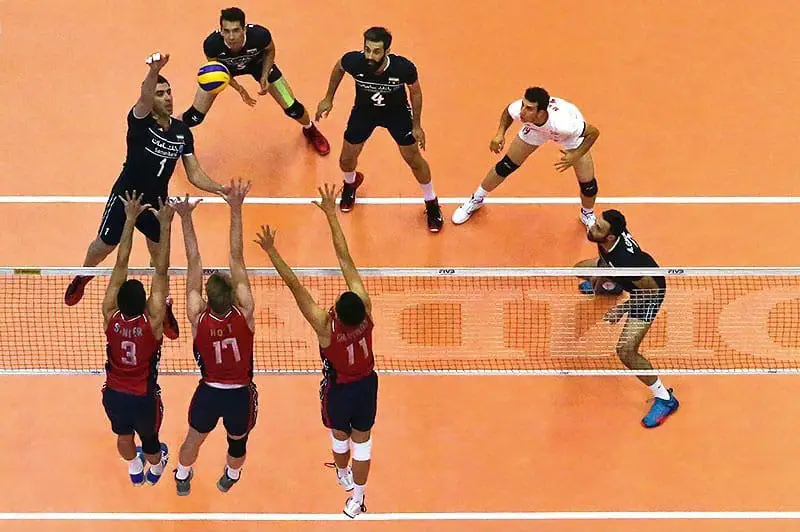
At its core blocking is a very simple task in which you simply jump above the height of the net to block the ball from coming on to your side from an opponent’s attack.
However when you deep dive into blocking there is actually a lot more to it than meets the eye.
For example if you don’t finish your block correctly players can hit off you, if you don’t jump close enough to the net the ball might come back on your side, on the flipside if you jump too close to the net you risk net touches.
This is just the surface of a very long list of things that must be perfected and practiced in order to be a successful blocker.
Now at a beginner level you may be wondering why it’s so important to be a great blocker,
Aside from the obvious of blocking the ball and winning points for your team it actually plays a massive role in how successful your team can be in defense.
Having good blockers that are on time and always take the same angles allow defenders to set up around them and drastically increase the teams chance of picking up the ball and saving the rally.
Table of Contents
Blocking Technique
Unlike nearly all other skills I have previously talked about this skill relays largely on your hands and arms and less on your footwork and lower legs.
Now with that being said footwork and the lower legs are extremely important in blocking however at a beginner level I would argue less so.
Footwork becomes a lot more important at higher levels where wing players will try and help the middle as well as the opposite wing player to block, this offering a 2 or even 3 man block.
The other time in which footwork is extremely important is for middle players who ideally need to try and help the wing players block.
However when learning or just starting your main aim is always worry about your opposite players and not to worry about the other attackers at this stage.
Based on the above in this article I am not going to worry about the footwork and purely work on the actual blocking technique and finishing of blocks.
In order to block correctly we first need to.think about what we are trying to achieve when we block.
Obviously this is to block the ball from coming over the net and make it land on the opponent’s side.
The first step to be a successful blocker is jumping at the right time.
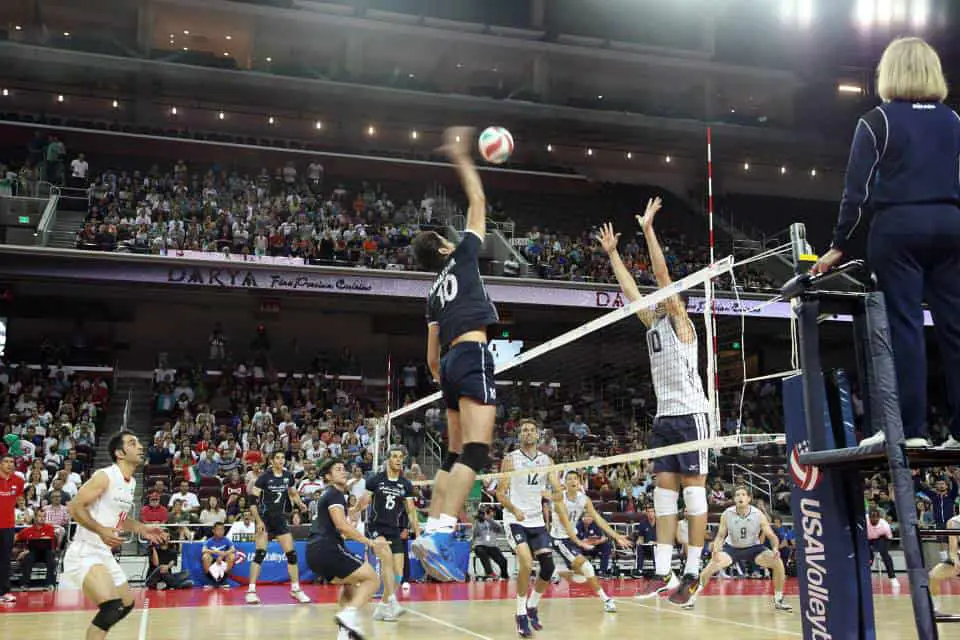
If you jump too early you run the risk of being below the net by the time that ball is hit.
If you jump too late you run the risk of being hit over before you are even up in the air, or alternatively getting hit off of due to your block not being formed correctly.
There are lots of things to look out for when trying to determine the correct timing for your block.
At the beginner level though I would suggest you start your jump just after the attacker has left the ground.
This should place you in the air just before they swing so you have time to adjust where you are blocking.
Unlike other actions in volleyball, blocking is mainly a standing jump motion (or at least it is at beginner level).
As such we need to work a lot harder to get the desired height.
In order to get your highest jumps we need to use our bodies like a compressed spring desperate to release.
This means we want to make a nice deep squating action before using the extension of our bodies and our arms swinging quickly up to get as much height as possible on our jumps.
Whilst soaring upwards we should already have our arms up above our heads and stretched up as high as possible.
What we want to avoid is looking like an Olympic diver entering the pool.
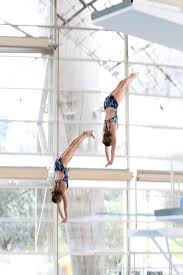
Instead we want a nice bit of space between our arms approximately just smaller than the width of the ball to ensure it doesn’t go between our arms.
Once we have reached the peak of our jump and we are above the height of the net we want to press our arms and hands on to the opponent’s side.
The idea of this is to reduce the angle, time and space that the hitter has to work with.
This not only adds pressure to the hitter but also drastically reduces their hitting options.
One thing that I learnt when blocking which massively improved my blocking technique and success was turning my thumb’s to the sky.
What I mean by this is when you reach the peak of your jump with your hands and arms spread, if you take your thumbs and point them to the sky, your hands will open up slightly allowing you to take a larger area.

Adopting this little adjustment to my blocks instantly increased the amount of touches I was getting from blocks.
The last thing that warrants mentioning when blocking is the distance between you and the net.
I often see players who have mastered the block technique however still lose a lot of points by the ball being blocked but going down on their own side.
Now I understand why, as obviously we aren’t allowed to touch the net whilst blocking.
Now there is no strict rule or guideline as to how far away from.the net you should be, however, the closer to the net you can jump, the further over the net you can press when blocking the attack.
Generally speaking I would suggest jump as close as you can to the net without your body touching it.
You arms can be moved and or pulled away as required however it is much harder to contort your body away from the net.
Role of Blockers
Yes it’s true blocking can be a fantastic way of winning points, however strictly speaking this isn’t really the role of the blocker.
As mentioned right at the start of this article, a well Formed block can drastically increase your defensive pick up rate.
If the ball is very tight to the net always go to smoother the ball.
However if the ball is in a normal setting location your role is to take a hitting area away from.the attacker.
For example if you are playing a side with good hitters, the shortest time that defenders have to react is a ball that is hit down the line.
Due to this fact it makes a lot of sense in this situation to block the line and force the attacker to hit cross court where your defenders are waiting ready.
If you think of blocking not just as an opportunity to block the ball and win the point, but also as a method to force the attacker to hit where your defenders are, you will drastically improve as a blocker and as a team.
Blocking Angles
The last thing I want to touch on is blocking angles.
Now when I say blocking angles, what I mean is at what angle you want to aim your block to give yourself the best success rate if you do block the ball.
You may have heard of the term ‘wipe’.
A wipe in volleyball is where an attacking player hits the ball off of your block in order to win a point.
For example they may hit the side of your arm or hand so that it ricochets off and out of the court.
If we understand the different blocking angles and line up with the opponent properly we can’t easily prevent this from happening.
To better explain this I will use the example of a player hitting from.the right side of the court.
This means that our right arms will be closest to the sideline.
If a player is hitting from the right we want to make sure when they hit the ball we are angling our block to make the ball go left towards the centre of the court.
To do this we want to press our Right arm slightly further than our left so that we create a nice angle towards the centre of the court.
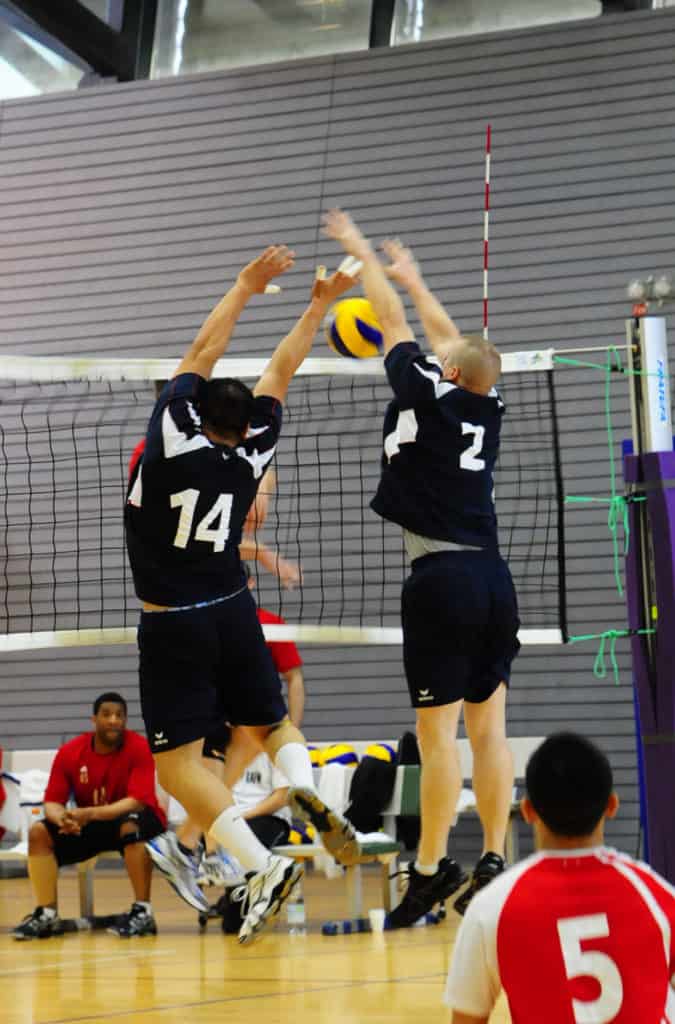
If the player was hitting from the left side the opposite would be true and we would press our left more.
By ensuring we understand where we want the ball to land on the opponent’s side we always ensure we are creating the right angle and avoid any wipes.
Now we have the basic understanding of the technique and why wole block in the way we do, let’s go over some drills you can use to practice these things.
Best Blocking Drills
Block and Touch
The Block and touch drill is great way of teaching players how to block and more importantly how a good block will feel.
To carry out the block and touch drill you will need at least one player to stand on the opposite side preferably on a hop up, bench or similar.
The player on the opposite side of the net will want to position themselves in an attacking position such as at position 4 or position 2.
Once in the correct position they will hold a ball up above the net just on their own side of the net.
The remaining players will line up and get ready to practice blocking.
The first player from the blocking line will step forward towards the net and line themselves up with the player holding the ball up who in this case is acting as an attacker.
The blocking players will jump, reaching upwards, once they are above the net they will reach over (or press their block) to touch the ball on the opposite side.
The aim of this drill is to teach players not only how to block but also how to press the block to offer the attacker the least amount of time and hitting angles to work with.
This drill is also a fantastic way of getting players used to pressing their blocks whilst avoiding net touches. The more this drill is practiced the fewer net touches that will result.
Mirror Blocking
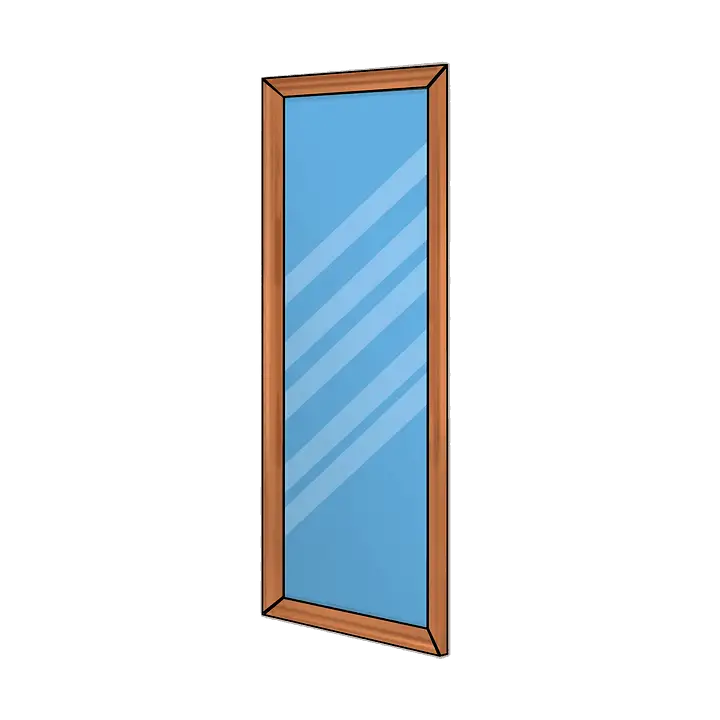
As I mentioned earlier one of the main components to being a good blocker is getting the timing just right.
Generally speaking when blocking we want to leave the ground just after the attacker has so by the time they contact the ball you are at the peak of your jump.
By doing the drill known as mirror blocking this can really help in perfecting that timing.
To set the drill up you will need at least two players, if you have a larger number of players then simply split them up into pairs.
One player from each pair will stand on opposite sides of the net to each other. For the sake of the drill it isn’t overly important where they stand along the net so if there is a large group just get them to spread out along the net.
One side of the court will be the leaders and the opposite side will be the mirror group.
The player that is leading can dictate exactly when they are going to start the block.
The mirror player must react to the leaders jump and attempt to high five them over the net.
The drill works on blocking reactions and also helps players better understand the timing of the block.
If done correctly the mirror player should be able to high five the leader just as the leader is on the downward phase of their jump.
As I said this drill is a fantastic way to help blockers practice reactions as well as ensure they are always up and ready to block the ball with the correct timing.
Low Net Blocks
This drill can be a great way to help players develop the blocking technique without worrying about the jumping element.
If players can not jump high enough or they are younger players they may get discouraged with blocking. However blocking may become a really imperative part of their game at a later date so it is important they understand how and why the block is executed in the way it is.
This method can be implemented into a number of drills to help players practice blocking.
Simply lower the net to just above the players head height (Use the average height to ensure all players can still reach over the net)
The way in which I would do this drill is have a confident hitter (maybe even a coach) to stand on one side of the court with all the balls near hitting position 4.
The remaining players will line up on the other side of the court.
The first blocker will step forward and approach the net.
The hitter on the other side will slap the ball to signify the drill has started, the hitter will then throw the ball up to themselves before spiking the ball over the net in the direction of the blocker.
The blocker will work on forming their block at the correct time and then pressing the block to try and make the ball go back down on the hitters side.
If done correctly this drill can be fantastic at training players how to use their arms when blocking and also get them more familiar with what a good block will feel like.
Blocking Ball In-Court
When players become better blockers one thing that I find is still very common is people wiping the ball of the outside of the block or hitting the ball into the block so that it lands out.
The reason this happens is because players don’t angle their arms and bodies to ensure the ball can ricochet back towards the centre of the court.
This is extremely common when the opposition set the ball to wide and the attacking player is hitting from a very tight angle.
Luckily this can be practiced quite easily.
Have an attacking player stand on the other side of the court again near the 4 position, however this time ask the hitter to step further round so they are nearer the outside of the court.
The attackers job is to hit the ball over the net towards the blocker.
The blockers role in to ensure that the ball lands towards the centre of the court as opposed to bouncing off their outside arm and landing out.
As you would have read earlier the way in which we ensure the ball lands in court is by pressing our outside arm more than our inside arm.
By doing this we create a slight angle back towards the centre of the court, if we were to jump straight with both our arms equal we are leaving a flat surface in which a crafty attacker will quickly hit off the outside of.
This drill is very self rewarding as if the players actively see the ball landing back towards the centre of the court they can see they are performing the drill well.
However if the ball bounces of them and goes out or is coming off at all sorts of weird and wonderful angles we can see they are not in control of their blocking.
Block From Spiker on Bench

This drill is really just bringing everything we have learnt above and piecing it all together in game situations.
For this drill you will simply need one attacker on a box, hop up or bench preferably in the 4 or 2 position.
The remaining will players will again line up on the opposite side.
The first blocker will step forward and get ready to block.
The attacker will slap the ball to start the drill.
The attacker will then throw the ball up and try and spike the ball to win the point.
The only rule for the attacker is they must take on the blocker, this means they must hit the ball towards the blocker and try and challenge them directly.
The blockers role is to use everything learnt above to block the ball and turn it back towards the centre of the court.
I would suggest the same player blocks 2 or 3 balls as if they were in a long rally in a game.
This drill not only familiarises them with blocking game spikes but also helps them ensure they are blocking the same even when fatigued.
Block From Held Ball (Moving Target)
We have now done a lot of drills in which the blocking player knows the ball will either be in the same place or hit directly at them.
However in game situations opposition players will actively avoid the block and whilst it is important as blockers will hold the same line to avoid silly touches on the block, there will be some situations in which the blocker can reach for the ball and get a quick easy point.
A good example of this is when a player tries to tip the ball round the block, the blocker may be able to reach the ball and quickly poke it back down on the opponent’s side.
This is where this drill comes into play.
This drill is exactly the same as the first drill I talked about ‘Block and Touch’
However, it comes with a bit of a twist.
This time the player holding the ball with two hands will not keep the ball in the same place.
After the holder has slapped the ball to signify the drill has started, as the blocking players start their jump the holder will move the ball to any location they can comfortably reach whilst keeping the ball above the height of the net.
The blockers role is to adjust their block to ensure they maintain good form but move their arms to touch the ball and take away the opposition players hitting angle.
This can be great at helping players make minor adjustments in the air depending on what they see from the hitters approach.
Jousting Competition
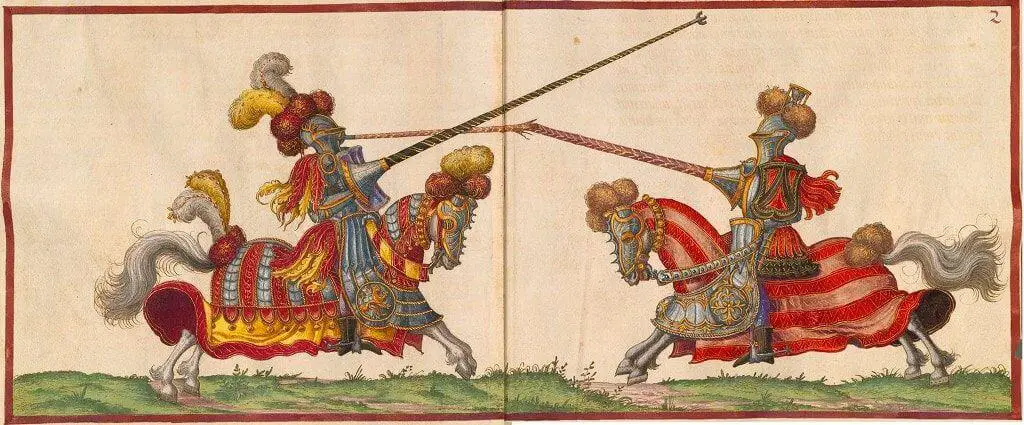
The last drill works on a different form of blocking that I have not yet talked about and also this drill is just really fun in general, especially if everyone has a little competitive fire in their belly.
Jousting (Click the link for some dramatic anime jousting action) is used when the ball is directly above the height of the net and two front court players jump to try and win the point.
The joust involves meeting an opponent head on in a one vs one to see who is superior.
Jousting is much more like blocking than attacking however it does have a slightly different twist.
When jousting you really want to try and grab the ball and throw it down on the opponent’s side, the opponent will be doing the same thing so you meet power with power.
To perform this drill bring players up two at a time and have them stand either side of the net from each other.
Once the players are in position a feeder will throw the ball up and try and get it directly in line with the net.
The two players will jump and both joust, the winner is the player who can make the ball land on the opposition side.
If you want a pro tip. When trying to win a joust make sure you jump after your opponent.
By jumping last you will be able to use momentum and upwards trajectory to your advantage when pressing down on your opponent.
If you jump first you will likely be on the way down meaning you won’t have any momentum to give you that extra push.
This drill works excellently as a little friendly competition.
Have everyone joust against everybody. The winner is the player with the most victories at the end.
